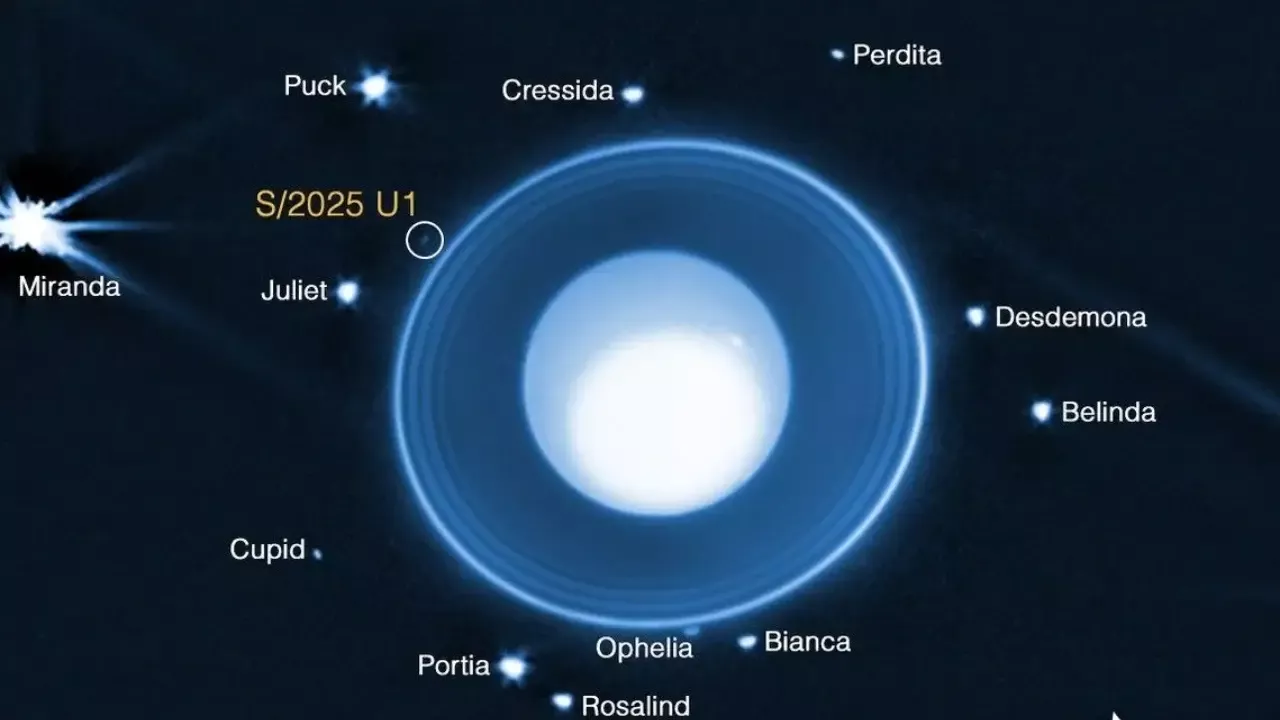
According to NASA, the James Webb Space Telescope has discovered a new, previously unknown natural moon orbiting Uranus. This was reported by Zamin.uz.
This moon has been named S/2025 U1, bringing the total number of known moons of the planet to 29. This discovery is of great significance for researchers and enthusiasts in the field of space sciences.
A team of scientists led by the Southwest Research Institute (SwRI) studied the new moon using the telescope and determined its characteristics. According to NASA, the moon S/2025 U1 was first observed during observations on February 2, 2025.
This event has created new opportunities for scientists studying planetary systems. The new moon has an estimated diameter of about 10 kilometers, and such small bodies may have been overlooked in previous discoveries.
For example, the Voyager-2 probe, which passed near Uranus in 1986, was unable to detect this moon. This once again highlights the importance of modern telescopes and technologies.
Currently, S/2025 U1 is orbiting approximately 56,000 kilometers from the center of Uranus, between the orbits of the moons Ophelia and Bianca, revolving in the planet’s equatorial plane. According to SwRI specialist Mariam El Mutamid, the moon’s nearly circular orbit suggests that it may have formed in its current location.
Additionally, Uranus’s first two moons – Titania and Oberon – were discovered in 1787 by English astronomer William Herschel. The most recent artificial moon, S/2023 U1, was detected in November 2023 at the Las Campanas Observatory in Chile.
Thus, the family of natural moons of the planet Uranus has gained another new member. This scientific discovery made through the James Webb telescope is not only a source of great interest but also inspiration for astronomers and all enthusiasts fascinated by space and its mysteries.







